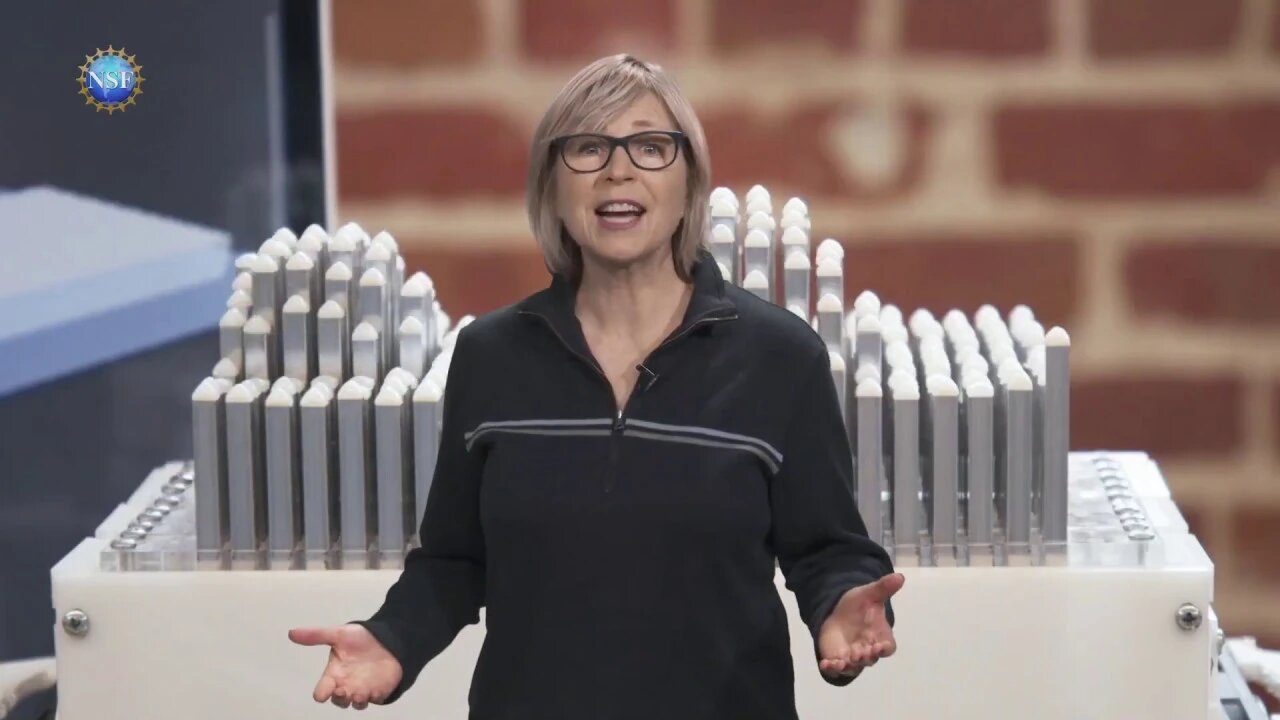Premium Only Content

🔴👀🔴 4 Awesome Discoveries You Probably Didn’t Hear About Episode 37
Spider eyes - jumping wise, kirigami graphene, design for the blind, and coming up for landing! It's 4 Awesome Discoveries you probably didn't hear about!
Kirigami inspires new method for wearable sensors
https://mechanical.illinois.edu/news/...
Keong Yong and Ezekiel Hsieh, University of Illinois at Urbana-Champaign
Most complete exploration of fly landing maneuvers to advance future robots
https://news.psu.edu/story/593959/201...
The Pennsylvania State University
Colorado State University
National Centre for Biological Sciences in India
Stanford increasing access to 3D modeling through touch-based display
https://news.stanford.edu/2019/10/29/...
Stanford University
Vista Center for the Blind and Visually Impaired
Smith-Kettlewell Eye Research Institute
Compact depth sensor inspired by spiders
https://www.seas.harvard.edu/news/201...
Harvard University
UC Berkeley
National University of Singapore
Most people find the aerobatic maneuvers of flies annoying. But, that’s exactly what landed this guy – Calliphora vomitoria -- a starring role in a new study. The most complete exploration yet of how flying insects land upside down in the blink of an eye. The slo mo reveals the fly’s perfectly timed maneuvers… well, usually. This research is a step toward better understanding the biomechanical and sensory processes involved. It has implications for neuroscience, as well as robotics.
The depth perception of jumping spiders allows them to pounce on targets from several body lengths away. Taking a cue from evolution, engineers have developed a compact, efficient depth sensor that works much like one of a jumping spider's front-facing eyes, calculating distance from different amounts of focus. The team uses a nanophotonic device called a metalens along with a computer algorithm to build maps that represent distance. The metalens sensor could be used for tiny robots, small wearables and lightweight virtual and augmented reality headsets.
As sensors become more common, how do you make them smaller, more durable, and less power hungry? By using the ancient art of Kirigami, of course! To cut and fold graphene, the world’s thinnest material. This next generation wearable sensor can be worn, stretched up 240%, and twisted 720 degrees – yet returns to its shape and still conducts signals. This graphene Kirigami was developed using a new online platform for nano-manufacturing. Researchers are already working on sensor version 2.0.
This research aims to make 3-D printing and computer-aided design more accessible to the blind and visually impaired. The tactile display, an actuated array of pins, quickly produces a touchable representation of the user’s work in progress. It mimics the geometry of 3D objects designed on a computer. With the design’s early success, the team is now poised to improve the scale, affordability and resolution of the display, as well as the software program.
Subscribe and hit the bell, Over video 150 sources! Watch ad free, YouTube does refuses to monetize this channel !!!
My new Patreon page https://www.patreon.com/user?u=26453564
https://www.bitchute.com/channel/kurtelliott/
-
 6:34
6:34
Kurt's News
2 months agoBad Cop Harasses The WRONG Guy and INSTANTLY Regrets It
701 -
 2:20:09
2:20:09
Tundra Tactical
16 hours ago $3.09 earnedIs Trumps Executive Order A Second Amendment Wishlist???: The Worlds Okayest Gun Live Stream
43.3K2 -
 2:33:51
2:33:51
John Crump Live
21 hours ago $27.37 earnedSaturday Night Main Event!
140K14 -
 13:57
13:57
TimcastIRL
1 day agoTrump NUKES IRS After DOGE Investigation, OVER 9000 Employees To Be FIRED
145K189 -
 13:35
13:35
Russell Brand
19 hours agoPFIZER JUST MADE THEIR NEXT MOVE AND EXPERTS ARE TERRIFIED
168K340 -
 1:15:57
1:15:57
Victor Davis Hanson Show
1 day agoOver Here, Over There: the Russo-Japanese War and Trumpian Peace Policy
81.7K37 -
 23:55
23:55
MYLUNCHBREAK CHANNEL PAGE
1 day agoThe Nephilim Are Here
104K103 -
 1:00:58
1:00:58
Break The Cycle w/ Joshua Smith
16 hours ago $2.21 earnedBreak The Cycle Ep. 247: Funny Guys w/ Robbie "The Fire" Bernstein
35.6K1 -
 41:26
41:26
TheTapeLibrary
1 day ago $10.73 earnedThe Disturbing Horrors of the Trans-Allegheny Lunatic Asylum
66.4K13 -
 10:07
10:07
Tundra Tactical
17 hours ago $7.33 earnedTRUMP'S HUGE GUN RIGHTS MOVE!
46.4K10